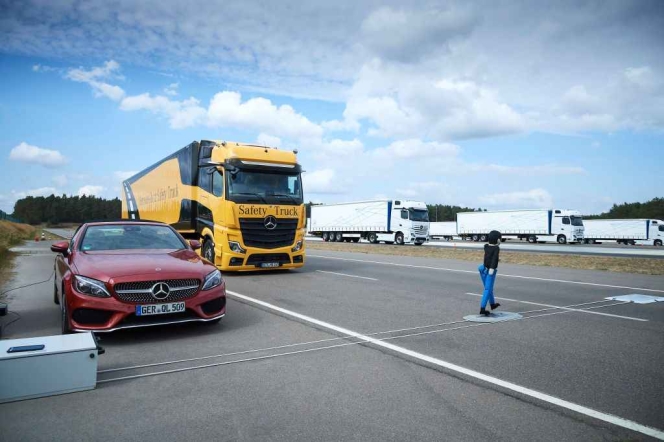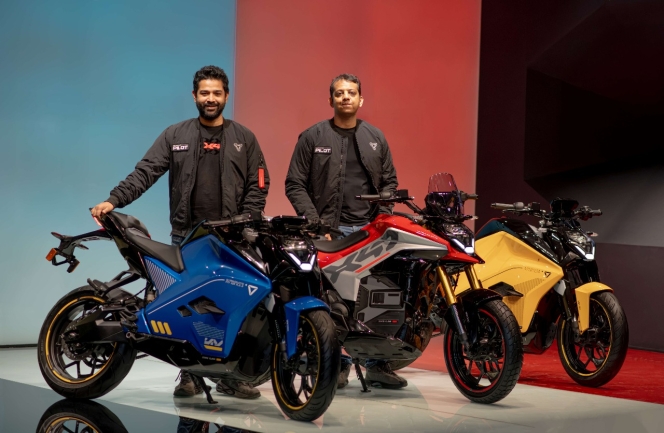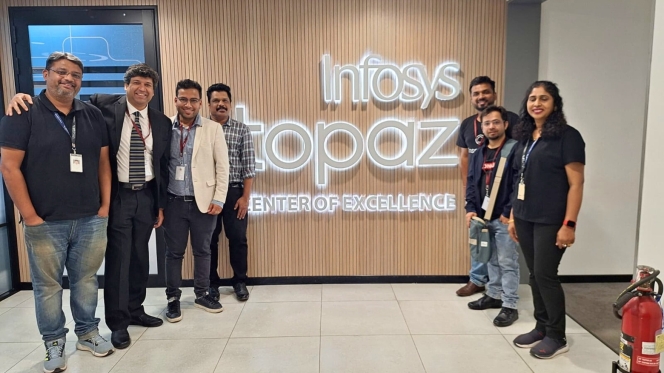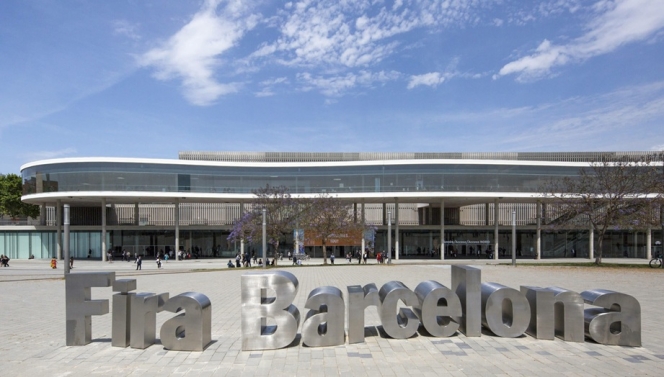Accident Research Leads Mercedes-Benz Trucks To Develop Safety Technologies
- By MT Bureau
- August 20, 2020

No matter whether someone is in a car, on a bike or on foot, to name just three examples – if there is an accident involving a truck, the collision can quickly end with serious or even fatal injuries for the ‘weaker’ party, as they have no chance against the much "stronger" truck due to the huge difference in mass. However, a collision between two trucks can also result in grave consequences for those involved. For Mercedes-Benz Trucks, the top priority has always been to ideally completely avoid this type of scenario or at the very least mitigate the consequences of accidents. That is why new safety and assistance systems are continually being developed and existing systems optimised specifically for the trucks. The Group's Commercial Vehicle Accident Research plays a central role in these efforts. With its accident analyses it prepares the foundations for continually introducing further improvements to the vehicles. "We consider our studies to be indispensable for assessing the behaviour of a truck in actual accidents," Kay Morschheuser, Head of Commercial Vehicle Accident Analyses at Mercedes-Benz Trucks, said.
This procedure has a tradition: since 1972, the commercial vehicle accident researchers at Mercedes-Benz Trucks have been examining selected accidents with Mercedes-Benz trucks throughout Germany using all the existing and ascertainable information, and documenting data on the course of those accidents, the vehicles involved and the damage – complemented by relevant research by the police rescue teams and experts. "We also look for conspicuous aspects pertaining to, for example, the frequency of types of accidents, the discernibility of certain patterns of events or to injuries to persons involved in accidents," Kay Morschheuser explains. Whereas initially the focus was only on passive safety systems such as the cab structure, restraint systems, front and rear underride guards as well as side protection, that focus was expanded with time – in line with technological developments in the vehicles – to include systems for active and integral safety. These include systems such as ABS – the Anti-lock Brake System, EBS – the Electronic Brake System and ESP – the Electronic Stability Program or Proximity Control Assist and Lane Keeping Assist as well as Active Brake Assist (ABA), Sideguard Assist or Active Drive Assist.
Based on their analyses, the accident researchers derive modification measures in close co-operation with the Development department which then often end in future Mercedes-Benz requirements. That is how, several years ago, the idea for Sideguard Assist was developed; since 2016 it has been available for many truck models ex works at Mercedes-Benz Trucks and within its system limits can contribute towards avoiding accidents with pedestrians and cyclists. Active Drive Assist which allows partially automated driving (level 2) in a truck for the first time ever as well as the MirrorCam instead of the common main and wide-angle mirrors are further more recent examples of the interplay between Accident Research and Development at Mercedes-Benz Trucks.
Crash Tests
The analyses of Accident Research also go hand-in-hand with the crash tests that have been systematically carried out for years. In this regard the developers and safety experts at Daimler Truck AG have regularly developed their own standards and trials always oriented towards actual accidents in addition to the tests for cab rigidity in line with the EU standard ECE R 29. One of the most important crash tests is, for example, the impact with a platform vehicle mock-up which reproduces the typical rear-end collision between a truck and a truck driving ahead of it on the motorway. "In future we will reconstruct real accidents on the computer as a complement to the crash test," says Kay Morschheuser with a look to the future. The combination of crash simulation and accident reconstruction offers an opportunity to examine accidents more specifically and in more detail with freely selected parameters and thus to better understand the mechanisms in an actual accident. "Above all it is the circumstances which lead to an accident that are of particular interest to us," Kay Morschheuser adds. In view of the future increase in automated driving and, consequently, the need to have the corresponding systems able to reliably handle the numerous traffic situations, this is a decisive additional benefit.
As the "icing on the cake" of a solid vehicle safety development strategy, the crash tests form a sustainable unit with accident research. This approach also follows the holistic concept of "integral safety" which Mercedes-Benz is now pursuing more than ever, whereby the passive and active systems installed in the vehicle can provide support in four phases: first during driving, second in the event of danger, third in an accident and fourth after a collision.
A glance at general accident statistics reveals just how efficiently this concept, in particular, contributes to traffic safety along with many other measures. According to the German Federal Statistical Office the number of fatalities in accidents involving trucks in Germany dropped by around 60 percent between 1992 and 2018. The number of those seriously injured was reduced by about 45 percent during that time. And that despite an increase in transportation of around 80 percent. Accidents with serious consequences are much rarer, although their distribution by type of accident has remained almost unchanged. Rear-end collisions, accidents at junctions and accidents caused by the vehicle leaving its lane remain focal points. (MT)
- Ultraviolette Automotive
- Zoho Corporation
- Lingotto
- F77
- X-47
- Shockwave
- Tesseract
- Narayan Subramaniam
- Niraj Rajmohan
Ultraviolette Secures $45 Million Growth Capital From Zoho And Lingotto
- By MT Bureau
- December 04, 2025

Bengaluru-based electric vehicle maker Ultraviolette Automotive has secured USD 45 million from Zoho Corporation and Lingotto, one of Europe's investment management companies as part of its ongoing Series E investment round.
The investment from Zoho Corporation was led by Sridhar Vembu, Mani Vembu and Kumar Vembu.
This growth capital will accelerate the domestic and international scale-up of current products F77 and X-47, as well as future product platforms Shockwave and Tesseract.
Ultraviolette has built a design and technology-led enterprise with the F77 and the recently launched X-47.
The company has expanded to 30 cities across India in a short span of 12 months and is expanding to 100 cities by mid-2026. The F77 motorcycles were recently launched in the United Kingdom, bringing Ultraviolette's presence to 12 countries across Europe.
Narayan Subramaniam, Co-Founder & CEO, Ultraviolette Automotive, said, “We are glad to announce our Series E investment from Zoho and Lingotto. Lingotto's legacy of backing iconic performance and mobility brands, combined with Zoho's long-term commitment to fostering cutting-edge Indian innovation, aligns perfectly with Ultraviolette's mission to build category-defining electric mobility solutions for India and global markets.”
Niraj Rajmohan, CTO & Co-Founder, Ultraviolette, said, "With the ongoing Series E investments, we are doubling down on growth and expanding our production to meet increasing demand. Our focus is on advancing breakthrough battery technology, elevating performance capabilities and expanding production to support upcoming product platforms. This investment will accelerate our journey towards scaling into India and global markets."
Disseqt AI Partners Tata Technologies And Infosys For Agentic AI Adoption
- By MT Bureau
- December 04, 2025

Agentic AI platform Disseqt AI has announced a partnership with Tata Technologies and Infosys. As per the agreement, Disseqt AI will assist both companies' IT and DevOps teams in developing and fast-tracking the production of tailored Agentic AI applications for automobile and FinTech companies globally.
The partnership aims to help auto and FinTech firms embrace customised Agentic AI faster and in a secure manner.
Disseqt AI, which has operations in Bengaluru, San Francisco and Dublin, provides an enterprise-grade platform for IT and DevOps teams. The company claims its platform cuts down Agentic AI testing and operations cost by 70 percent and improves productivity by up to 80 percent. The platform allows these teams to test, simulate and monitor their Agentic AI systems tailored across industries, ultimately enabling enterprises to operationalise tailored Agentic AI faster and at scale, without sacrificing ethics, governance and compliance.
Apoorva Kumar, Founder and CEO, Disseqt AI, said, “This is a landmark announcement for us as we further embed Disseqt into enterprise workflows for testing, simulation, monitoring and auditability purposes. We are already working closely with both Tata and Infosys on several projects and are proud to be part of their innovation initiatives”
Last month, Disseqt AI announced a strategic collaboration with HCLTech and Microsoft to guide financial services institutions with Agentic AI adoption.
Battery Passport Implementation Beyond EVs To Be Focus Of Barcelona Event
- By MT Bureau
- December 03, 2025

Battery and Energy Storage Europe has announced a programme focused on the EU Battery Passport, a regulatory milestone that becomes mandatory in February 2027. The Barcelona-based event will address the compliance gap for applications beyond the electric vehicle (EV) sector, which have dominated the conversation to date.
The event, taking place on 8th and 9th September 2026 at Fira de Barcelona's Gran Via venue, will focus on solutions and talks for applications that fall within the regulation's scope: stationary energy storage, industrial batteries, grid-scale systems, long-duration energy storage and emerging applications in aerospace, maritime and rail electrification.
With the February 2027 legal requirement date approaching, the programme will bring together industry leaders, technology providers, and policy experts to address the compliance challenges facing these diverse sectors.
The Battery Passport is a digital record documenting a battery's entire lifecycle, from raw material sourcing to production, performance and eventual recycling. From February 2027, it becomes mandatory for all rechargeable EV, industrial and LMT batteries over 2 kWh sold in the EU.
Linked via QR code, the passport will track each battery's complete lifecycle, including composition, carbon footprint and recycled content, fundamentally transforming supply chain transparency and sustainability practices across Europe.
The programme will explore implementation topics including digital infrastructure requirements, data management systems, supply chain integration, verification processes and recycling traceability.
Ken Davies, Conference Programme Director at Battery and Energy Storage Europe, said, "The Battery Passport represents one of the most significant regulatory shifts our industry has faced, yet many companies are still grappling with what implementation actually means for their operations. While the EV sector has dominated the conversation, there's a critical need to address how this regulation applies to stationary storage, industrial applications and the innovative battery technologies powering Europe's energy transition. With the clock ticking toward February 2027, Battery and Energy Storage Europe will shine a light on the practical implementation requirements for these often-overlooked sectors, connecting stakeholders with actionable solutions and bringing together the expertise, technology providers, and collaborative spirit needed to turn compliance into competitive advantage across the full spectrum of battery applications."
- Scania
- Horse Powertrain
- SCA
- hybrid truck
- Aurobay Technologies
- Matias Giannini
- Tony Sandberg
- Ingo Scholten
Scania Selects Horse Powertrain For Range-Extender Truck Pilot In Sweden
- By MT Bureau
- December 03, 2025

Horse Powertrain has been selected by Scania to provide its range-extender system for a pilot vehicle, currently operating as a heavy-duty timber truck in Sweden. The collaboration is a step in testing hybrid powertrain solutions for demanding transport applications such as forestry logistics.
The pilot is part of the Scania Pilot Partner program and is currently operating in Sweden under SCA, one of Europe’s forestry companies.
The vehicle is built to handle Sweden’s timber routes, transporting heavy loads through remote terrain where access to charging infrastructure remains scarce. By combining a battery-electric drivetrain with the generator designed in Sweden by Horse Powertrain’s division Aurobay Technologies, the truck achieves both long-distance capability and reduced CO2 emissions.
The test route covers approximately 16 km, with an operational target of completing 7–8 rounds per day, comparable to a diesel truck.
The configuration supports the truck’s battery packs with a 120 kW range-extender unit based on Horse Powertrain’s 2.0 litre multi-fuel engine. Acting purely as an onboard charger, the unit supplies electric energy when required during long hauls, temperature extremes, or delays.
Matias Giannini, CEO, Horse Powertrain, said, "Forestry logistics represents one of the toughest challenges for electrification. The forest roads of northern Sweden demand strength, range and reliability. Charging stations are few, but the timber never waits. You can think of our range-extender as a powerbank for a heavy-duty truck: silent, efficient, and always there when you need it. By partnering with Scania and drawing on our engineering excellence, we’re proving how a compact, high-efficiency range-extender enables electric trucks to operate reliably in the most demanding environments. It’s a technology that cuts CO2 now.”
Tony Sandberg, Vice-President at Scania Pilot Partner, added, "What we’re doing in Sweden with Horse Powertrain and SCA builds directly on the 100-day trial we ran together with a logistics partner in Germany earlier this year. That vehicle logged almost 22,000 kilometres and drove more than 90 percent of the time on pure electric power, only using the range-extender when no charging was available. The result was a CO2 reduction of over 90 percent compared with a diesel truck. Those learnings give us a strong foundation as we tailor the system for demanding Nordic timber operations."
Ingo Scholten, Chief Technology Officer, Horse Powertrain and Managing Director Sweden, Aurobay Technologies division, said, “Electrifying heavy-duty routes means understanding what drivers and operators face hour by hour. Long stretches without charging, variable loads and rapidly changing weather. This pilot lets us study those realities directly in day-to-day timber operations. The range-extender’s role is simple. Provide a stable, efficient energy supply so drivers can complete their full shift without interruption and with far lower greenhouse-gas emissions than a traditional diesel truck. The data we gather here will guide how we refine the technology and scale it for wider use across demanding transport applications.”
Horse Powertrain’s modular range-extender architecture builds on the core technology used in its passenger-car and light-commercial hybrid systems, adapted for the higher power output and durability demands of heavy-duty applications. Unlike conventional fixed-speed generator sets, the engine can operate across its full power band, allowing the system to deliver the required output efficiently while keeping fuel consumption, noise and vibration low.
The pilot truck is now undergoing testing in regular operations, carrying full timber loads to gather performance and efficiency data in real-world conditions. The results will guide future deployments of electrified powertrains in the forestry sector and other heavy-duty applications.






Comments (0)
ADD COMMENT